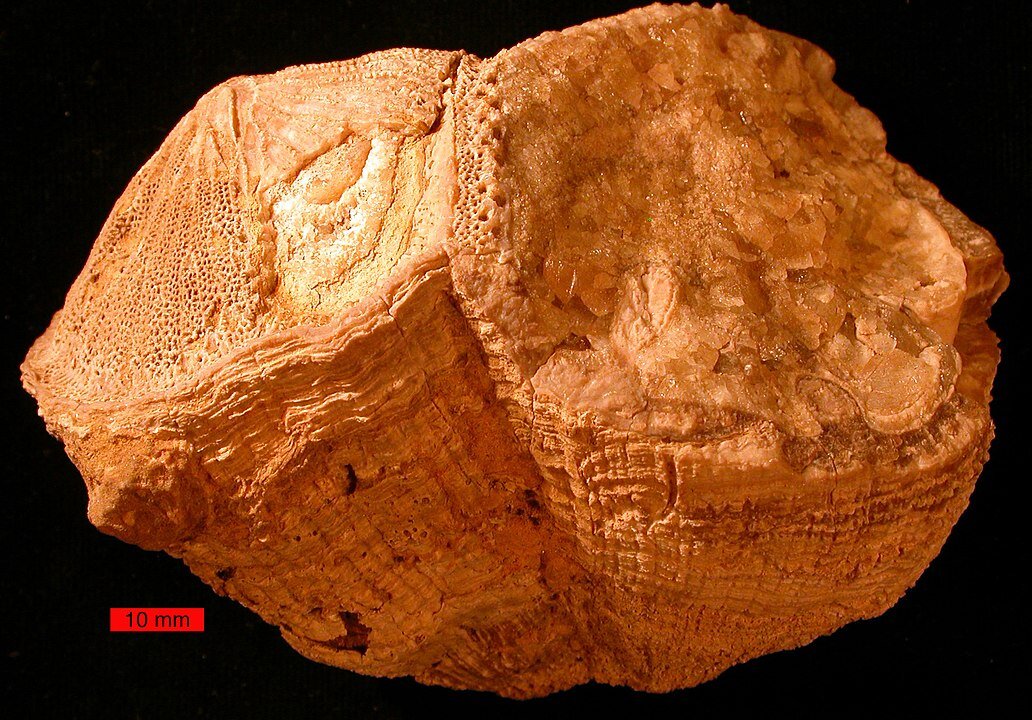Science
Related: About this forumAncient shell shows days were half-hour shorter 70 million years ago
From phys.org:

Earth turned faster at the end of the time of the dinosaurs than it does today, rotating 372 times a year, compared to the current 365, according to a new study of fossil mollusk shells from the late Cretaceous. This means a day lasted only 23 and a half hours, according to the new study in AGU's journal Paleoceanography and Paleoclimatology.
The ancient mollusk, from an extinct and wildly diverse group known as rudist clams, grew fast, laying down daily growth rings. The new study used lasers to sample minute slices of shell and count the growth rings more accurately than human researchers with microscopes.
The growth rings allowed the researchers to determine the number of days in a year and more accurately calculate the length of a day 70 million years ago. The new measurement informs models of how the Moon formed and how close to Earth it has been over the 4.5-billion-year history of the Earth-Moon gravitational dance.
The new study also found corroborating evidence that the mollusks harbored photosynthetic symbionts that may have fueled reef-building on the scale of modern-day corals.
more ...
mr_lebowski
(33,643 posts)Also rather shocking if it's actually a discovery at this point in time. I'd have thought they'd have reckoned something like this ... rather long ago.
Jim__
(14,075 posts)The full paper is available here. The abstract states it as a confirmation:
This study presents subdaily resolved chemical records through fossil mollusk shell calcite. Trace element profiles resolve periodic variability across ~40‐μm‐thin daily growth laminae in a Campanian Torreites sanchezi rudist bivalve. These high‐resolution records are combined with seasonally resolved stable isotope and trace element records that allow shell‐chemical variability to be discussed on both seasonal and daily scale. A combination of layer counting, spectral analysis of chemical cyclicity and chemical layer counting shows that the rudist precipitated 372 daily laminae per year, demonstrating that length of day has increased since the Late Cretaceous, as predicted by astronomical models. This new approach to determine the length of a solar day in geologic history through multiproxy chemical records at subdaily resolution yields considerably more control on the uncertainty of this estimate. Daily chemical variability exceeds seasonal variability in our records, and cannot be explained by diurnal temperature changes. Instead, we postulate that rudist shell chemistry is driven on a daily scale by changes in light intensity. These results together with those of stable isotope analyses provide strong evidence that Torreites rudists had photosymbionts. Bivalve shell calcite generally preserves well. Therefore, this study paves the way for daily‐scale reconstructions of paleoenvironment and sunlight intensity on geologic time scales from bivalve shells, potentially allowing researchers to bridge the gap between climate and weather reconstructions. Such reconstructions improve shell chronologies, document environmental change in warm ecosystems, and widen our understanding of the magnitude of short‐term changes during greenhouse climates.
Igel
(35,300 posts)Length of day. So how is the Earth slowing?
Distance of Moon from Earth. Connected with the previous issue, it's good for confirmation because it includes tidal information, which, together with the length of a solar day, tells you how long a synodic month was, and that gets you lunar distance and tangential velocity for a specific time. (The values are always there in the math, but the timestamp is important.)
Climatologists draw conclusions from laminae thickness to opine about the climate that the little critters lived in.
Biologists would like that it shows that this species wasn't subjected to seasonal stress. And just the methodology, something used on recently-dead critters that can be extended back 70 million years is a great thing. Some articles can have meh results but whoa! innovations in methodology. (Of course, both meh and whoa! depend on the perceiver's point of view.)